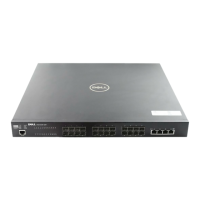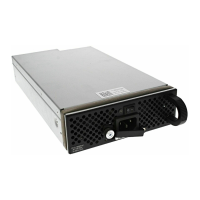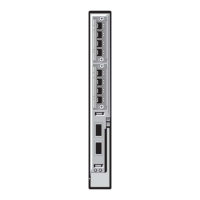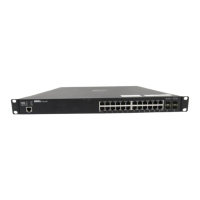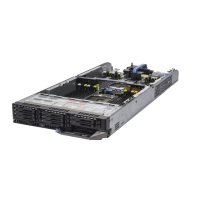178 | Quality of Service
www.dell.com | support.dell.com
• Interior node: A switch in the core of the network is responsible for forwarding packets, rather than
for classifying them. It will decode the DSCP in an incoming packet, and provide buffering and
forwarding services using the appropriate queue management algorithms.
To configure DiffServ on a particular S-Series router, you first determine the QoS (quality of service)
requirements for the network as a whole. The requirements are expressed in terms of rules, which are used
to classify either inbound or outbound traffic on a particular interface. Rules are defined in terms of
classes, policies, and services:
• Class: A class consists of a set of rules that identify which packets belong to the class. Inbound traffic
is separated into traffic classes based on Layer 3 and 4 header data and the VLAN ID, and marked with
a corresponding DSCP value. Outbound traffic is grouped into forwarding classes based on the DSCP
value, and allocated priority and bandwidth accordingly. One type of class is supported:
— All: Every match criterion defined for the class must be true for a match to occur.
• Policy: Defines the QoS attributes for one or more traffic classes. An example of an attribute is the
specification of minimum or maximum bandwidth in terms of kbps or percent of link capacity. The
S-Series supports two policy types:
• Traffic Conditioning Policy: This type of policy is associated with an inbound traffic class and
specifies the actions to be performed on packets meeting the class rules:
— Marking the packet with a given DSCP code point
— Policing packets by dropping or re-marking those that exceed the assigned data rate of
the class
— Counting the traffic within the class
• Service Provisioning Policy: This type of policy is associated with an outbound traffic class and
affects how packets are transmitted.
• Service: Assigns a policy to an interface for either inbound or outbound traffic
The user configures Differentiated Services (Diffserv) in the stages described above by specifying:
• Class
— Creating and deleting classes
— Defining match criteria for a class. Note: The only way to remove an individual match
criterion from an existing class definition is to delete the class and re-create it.
• Policy
— Creating and deleting policies
— Associating classes with a policy
— Defining policy statements for a policy/class combination
• Service
— Adding and removing a policy to/from a directional (i.e., inbound, outbound) interface
Packets are filtered and processed based on defined criteria. The filtering criteria is defined by a class. The
processing is defined by a policy’s attributes. Policy attributes may be defined on a per-class instance basis,
and it is these attributes that are applied when a match occurs.
Note: SFTOS currently supports the inbound direction only.

